






February 19, 2025




Winter no deterrence for Jackson Hole cold plungers

Plunging proponents say it prepares them for life’s inevitable other challenges. See page 12.









February 19, 2025





Plunging proponents say it prepares them for life’s inevitable other challenges. See page 12.

As we go about our days, working, playing and taking care of ourselves and others, a feeling of health and vitality makes it all better.
Nagging injuries or tight muscles can sabotage an otherwise great day, and screen addiction can steal our leisure time.
Good health truly is wealth. No one can “buy” it or take it from you, and its value is immeasurable.
For this edition of Hole Health, we considered not only new resources available to the community (a remodeled Rec Center, page 3), wellness fads (cold plunging, page 12) but examined specific things that can be done to improve our health (see chronic injuries on page 5, injury prevention on page 7, pelvic floor therapy on page 9 and digital detox on page 16).
Also read about health policy being debated this month on the floor of the Wyoming State Capitol in Cheyenne.
And if you can’t get enough reading about health, we break down lists of the most popular health-related books (page 10).
What are you interested in learning about in coming editions? Drop us a line: editor@jhnewsandguide.com.
— Johanna Love
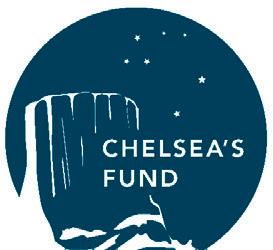



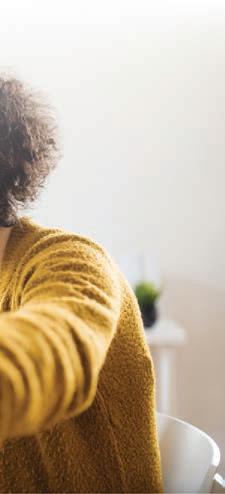
Published by
PUBLISHER
Adam Meyer
EDITOR IN CHIEF
Johanna Love
MANAGING EDITOR
Billy Arnold
PHOTOGRAPHERS
Bradly J. Boner, Kathryn Ziesig, Erin Burk
EDITORIAL DESIGN
Andy Edwards
CONTRIBUTORS
Billy Arnold, Jasmine Hall, Kyle Leverone, Kate Ready, Charley Sutherland
CREATIVE DIRECTOR
Sarah Wilson
ADVERTISING DESIGN ARTISTS
Lydia Redzich, Luis Ortiz, Chelsea Robinson
DIRECTOR OF ADVERTISING
Karen Brennan
MULTIMEDIA SALES MANAGERS
Tim Walker, Chad Repinski
DIGITAL CAMPAIGN, MULTIMEDIA SALES MANAGER
Tatum Mentzer
DIRECTOR OF OPERATIONS AND SALES
Tom Hall
PRODUCTION
PRODUCTION MANAGER: Dale Fjeldsted
PRESS SUPERVISOR: Stephen Livingston
PREPRESS SUPERVISOR: Lewis Haddock
PRESSMEN
Gunner Heller
CIRCULATION MANAGER: Jayann Carlisle
CIRCULATION: RuLinda Roice, Thatoe Kyaw
CEO Kevin B. Olson
©2025 Teton Media Works
Jackson Hole News&Guide
P.O. Box 7445, 1225 Maple Way Jackson, WY 83002
307-733-2047; JHNewsAndGuide.com

SBy Kate Ready
ince the Teton County Community Recreation Center re-opened better, faster and stronger in June, it’s become a Shangri-La for seniors strolling, kids swimming and families moving together.
Partnerships are abounding to foster connection inside its walls among new parents, Spanish speakers and adults with disabilities. While the climbing gym, aquatics center and indoor track are especially popular amongst community members, monthly blood drives, walking groups and adaptive yoga classes populate the diverse schedule.
“All aspects are in high demand,” said Morgan Daily, 29, the fitness and wellness coordinator for the Rec Center. “Every little corner is being used.”
Those corners include a climbing wall, open gym hours for group sports like basketball, volleyball and pickleball, as well as the aquatics center complete with a hot tub, sauna and steam room.
Stephen Foster, the director at Teton County Parks and Rec, did not have membership or daily user metrics available but said that the Rec Center is “full every day,” especially bustling in the after-work hours from 4 to 7 p.m.
Foster would know because every day he spends time walking around the Rec Center, talking to community members and gathering feedback.
“They’re loving it,” Foster said. “They are grateful this got done and think this is an amazing place now. It’s all good, positive stuff.”
A varied list of partnerships propel some of that positivity, helping to welcome an inclusive array of ages, backgrounds and ability levels into the community hub, which is all the more bustling in the winter time.
For example, seniors from Sage Living descend upon the track every other

week for a program where the residents can walk or engage in a different kind of movement: handcycling, using their arms on three-wheeled bicycles.
“A group of about five to 10 people walks around the track every other week,” Daily said. “They can bring their walkers or they can hop on the trike to go around the track.”
Steven Fontanini, 92, said he frequents the indoor track almost every day, depending on the bus schedule.
“I like to walk there because it isn’t
icy,” Fontanini said. “I’m trying to come here January, February and March.”
Behind Fontanini in the lobby, Faith Farnack, 23, stood with her workout bag over her shoulder, ready to head out.
“I usually use the gym,” Farnack said. “I like the machines and the weightlifting equipment.”
Farnack comes every morning and while she said the pass is tough for her to afford, the benefits outweigh the financial commitment. She’s looking forward to trying out the pool and
climbing gym.
“It’s expensive, but for all of the amenities, I think it’s worth it.”
Every Wednesday, the Teton County Health Department hosts a free program for post-natal parents dubbed “Stroll Wyoming” where new and expectant mothers meet at the Rec Center to walk around the track together. In addition to movement and socialization, the group offers extra infant carriers, as well as access to
Wyoming has high percentage of uninsured and people who can’t afford to pay their medical bills.
By Jasmine Hall
Hundreds of bills were filed for the 2025 legislative session, but critics say none were drafted with health care consumers in mind.
Jenn Lowe is a spokesperson for the Healthy Wyoming coalition that has been focused for years on expanding the Medicaid health insurance program. Advocates have gotten close in the past, with bills sponsored and budget amendments fiercely debated on the floor, but Republican lawmakers have always signaled they weren’t ready to make the leap.
There was no attempt made this year to get the issue to the floor of the House or Senate.
“We do think that is the most straightforward, simple and effective way, based on the states that have already implemented it, to address the shortage of the 19,000 folks that fall into the coverage gap,” she said. “However, we know that the current Legislature is not going to pass Medicaid expansion, and that is why there’s not a bill coming forward this year.”
She said Healthy Wyoming is open to talking about other policies that can help the uninsured in Wyoming. In 2023, there were more than 59,000 total uninsured people reported in the Cowboy State. Close to 10% of the state’s population is uninsured, compared to 8% in the entire U.S., according to the Kaiser Family Foundation, a nonpartisan health nonprofit that conducts health policy research.
Wyoming also beat the national average in medical debt between 2019 and 2021. Around 11% of adults in Wyoming reported not being able to pay their medical bills, while the U.S. average was 8.6%.
“And yet, the Legislature is not taking health care seriously in this state,” Lowe said.
One bill that health care advocates hoped to see come out alive during the 2025 session was sponsored by Rep. Karlee Provenza, D-Laramie. It would have prevented medical debt sent to collections from dinging the credit scores of Wyoming residents.
“This is an issue that is near and dear to my heart,” Provenza said in committee on Feb. 2. “My father died in September of 2024 after refusing an ambulance because of his concern about medical debt, and it is something that I have also lived with.
“I have gone through medical debt collection issues and while I have settled that debt, I am still trying to fix my credit because of that debt. I’m not alone in that.”
Provenza said her most recent research showed 15% of Wyomingites have had some amount of medical debt, and the median medical debt in collections for residents was $1,500.
But the House Labor, Health and Social Services Committee packed with hardline Wyoming Freedom Caucus members said they should turn their attention to the bigger issue of the high cost of health care. The Wyoming Freedom Caucus took control of the House after the most recent election cycle and looks to cut unnecessary government spending and champion issues such as election integrity, immigration law enforcement, parental rights and banning diversity, equity and inclusion programs.
House Bill 195 was voted down in a 5-3-1 vote. One Freedom Caucus lawmaker said there was a hospital

pricing transparency bill sponsored by a fellow member that could help patients know what the total was going to be when they left.
Healthy Wyoming didn’t have a position on the medical debt bill, but Lowe said it was at least a step in the right direction.
“When it comes to health care choices, there are some policies around insurance and access to insurance that we’re thinking about,” she said. “But quite frankly, at this point, we are willing to work with any lawmaker that wants to put forward a realistic policy that is going to help the people of Wyoming, who are the most vulnerable populations, afford accessible health care.”
Nate Martin, executive director of Better Wyoming, was disappointed to see the loss of the medical debt bill, which he said would have supported those who face debt when they get sick unexpectedly. He said there are those in the Legislature who want to solve problems, such as Rep. Lloyd Larsen, R-Lander, who ran a bill to expand mental health care that was also killed by the Wyoming Freedom Caucus.
Martin said his organization ran a statewide survey in 2023 asking residents what were the most important issues they faced in their communities. Martin said it came down to a lack of quality health care providers, affordability, mental health care and facilities within a reasonable distance to them.
These match up with the challenges described by Lowe. Wyoming is a large, rural state with a small population and getting doctors to practice here is difficult, she said. There are only a few private insurance providers, and nearly 70,000 residents depend on traditional Medicaid for their insurance. Not only is she frustrated the state hasn’t expanded the program, but said she’s concerned that President Donald Trump will
tighten qualifications for traditional Medicaid and some may lose coverage.
She also said the people who make up the great state of Wyoming are private. She said they are reluctant to talk about the personal issues related to health care, and how they are really hurting.
“Those are the problems that Wyoming is actually facing,” Martin said.
When it came to the hospital pricing bill sponsored by Rep. Daniel Singh, R-Cheyenne, a second term Wyoming Freedom Caucus member, both advocates said the bill wasn’t going to change the system. House Bill 121 passed a third reading 58-31 and would require hospitals to list prices for medical items and services and place the Wyoming Department of Health in charge of monitoring whether hospitals were actually doing so. This would only codify federal law that hospitals are already required to follow.
“The bill has a really kind of nice sounding name,” Martin said. “But its entire function is to allow the people advancing it to not do anything to actually fix problems.”
He said it isn’t creating more transparency than already exists. But it’s being sold as a way to improve health care access without appropriating any extra funding or creating new regulations.
But the bill sponsor made an argument for putting the requirements into state law.
“Two days ago, when we presented this bill, that same day, the presidential administration made more changes to the policy, just emphasizing the need to get this in our own green books,” Singh told the Labor Committee on Jan. 17. “I really do think it’s up to us to make sure that this consumer protection policy goes into effect and that we’re able to protect our citizens.”
There were some bills that came
out of the Joint Labor, Health and Social Services Committee during the interim his organization had no problem with. The committee is tasked with learning more about the health care issues in the state in between sessions and drafts bills for upcoming sessions based on hours of testimony and research. These are different from bills that are sponsored by a lawmaker individually, such as the hospital pricing bill.
Lawmakers can request bills based on their own interests, requests from constituents or lobbying groups. Some of the health bills sponsored individually that made it through the first half of the session were those that would ban masks, vaccine and COVID-19 testing discrimination, defining health care to exclude abortion or expand which volunteer first responders would qualify to join the state’s health insurance program.
Three committee-sponsored bills that have been celebrated for passing the Senate on third reading and being introduced in the House deal with handicap placards, music therapy and drug overdose reporting. The legislation shows the small ways the state can impact a patient by expanding the person they can get a handicap card from, as well as how the lives of those suffering from addiction could be saved.
Senate File 23 expands the providers a person with disabilities can go to for a handicap placard used for parking. Instead of only being able to get a referral from a physician or advanced practice registered nurse, they could go to their physician assistant, physical therapist, occupational therapist, podiatrist or optometrist. It was unanimously passed out of the Senate Labor Committee and passed 20-7-4 on third reading in the Senate.
A bill that was considered a victory for music therapists was Senate File 36. The proposed legislation
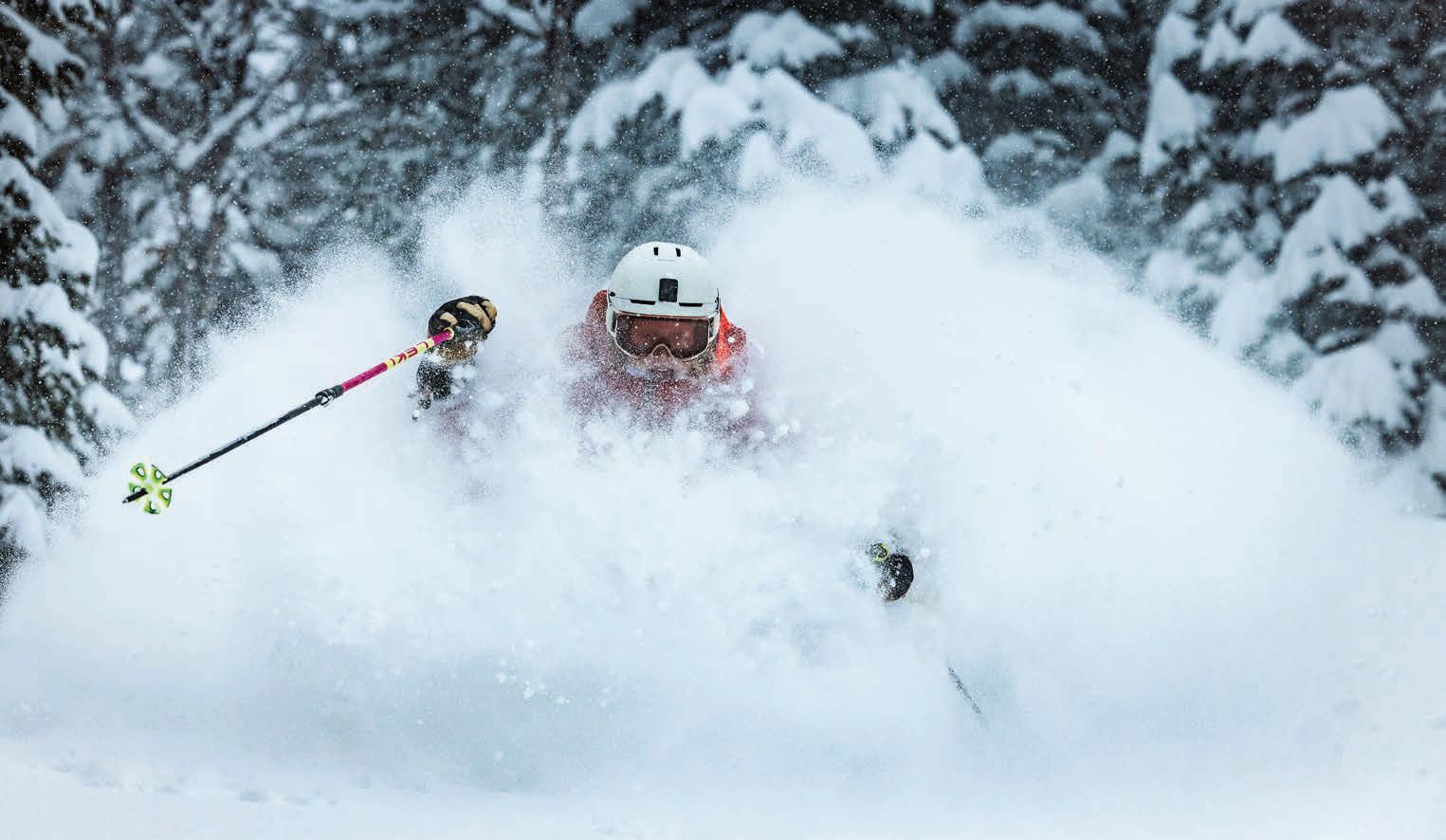
more than just the body, as Madison Rose Ostergren (above) explained. The professional big mountain skier has been dealing with a foot injury since last August.
By Kyle Leverone
Jackson Hole is known for its recreational opportunities. With Grand Teton National Park just north of town and Rendezvous Mountain on the west bank, there is no shortage of outdoor activities. Skiing and snowboarding in the winter, running and biking and climbing in the summer. Close your eyes, and point. Jackson’s got it. However, the more there is to do, the more there is to sprain. Or tear, or pull, or bruise or tweak.
Injuries are a part of life in Teton County, but the majority of them are not the ACL tears heard about weekly in the winter — many come in the form of low-grade chronic issues. And although they may not be as serious as a broken bone or torn ligament, they are

just as difficult to work through.
Just ask Madison Rose Ostergren.
The professional big mountain skier and four-season outdoor athlete is known for her endurance and her gnarly excursions into the backcountry. Year-round, she stays in phenomenal shape for her next season’s activity: skiing, trail running, climbing, hiking. Jackson is the perfect match for her because whatever she feels the urge to do, Jackson has the playground to do it.
Last August, though, Ostergren benched herself. She’s had many chronic injuries over the years, but this time, it was her foot that bothered her. And out of all the things she could have been doing to injure it, Ostergren did it playing capture the flag in East Jackson’s Wayne May Park. She described it as “the straw that broke the camel’s back,” after a
whole summer of running in the Tetons.
After an initial consultation — from which she came away with a shaky prognosis of a fractured toe joint — Ostergren went into a boot and waited for it to heal.
“And that is so hard for me,” she said. “If anyone knows me, I move all the time, I want to train. My body is my job, and I take care of it the best that I can. I’m constantly training, constantly on my feet.”
Month after month, she waited, and the more she waited, the more miserable she became. As Ostergren was unable to perform her job as a professional athlete, she worried about losing sponsors. She worried about her identity. “Who am I when I’m not an athlete? Who is Madison?” she pondered.
“We all go through highs and lows,
and some people struggle with depression or not,” Ostergren said, “but for me, it comes up so much stronger when I’m injured because I identify so much with moving my body, whether that’s skiing or doing the Picnic or dancing. So not being able to do that, it really makes you question [who you are].” Eventually, she snapped. Four months of treating her foot injury as a toe joint fracture yielded no positive results, so she went to the University of Utah to get it checked out. There, she learned for certain that she partially tore her plantar plate, the tendon that runs along the ball of one’s foot. A full rupture requires surgery, but luckily for Ostergren, she was in the clear. In fact, despite nagging pain, the doctor cleared her to ski.


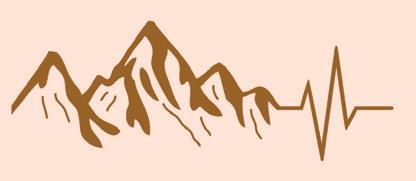

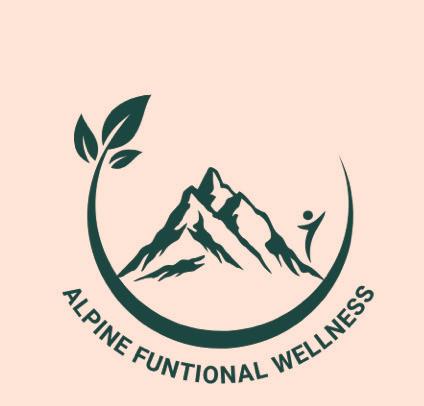

307-413-2906 • info@aancjh.com •
compassionate nursing care. Our team fully recognizes the individual needs of patients, which is why our staff is composed of highly specialized professionals who specialize in a variety of medical and surgical nursing care.

Are you experiencing symptoms like:
• low sex drive • fatigue • hot flashes • mood swings • body fat
• muscle mass • erectile dysfunction • breast tissue in men? You could be experiencing hormone imbalance, call to schedule your intro visit via telemedicine.
Services : Lab Draws, Weight Loss, Hormone Replacement for Men and Women, Thyroid, Imbalance, Facial Aesthetics, Botox, IV Nutrition


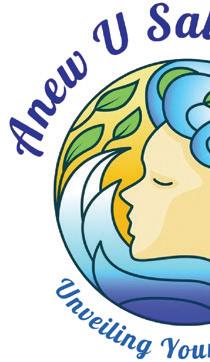









307-654-2026 • ferrypeakwomenshealth.com •
• Well Woman Annual Visits • Menopause • Hormone Replacement • Contraception • Irregular or Painful Menstrual Cycles
• Urinary Tract Infections (UTIs) • Vaginal Odor/Itching
• Female Sexual Dysfunction • Pelvic Pain • Breast and Cervical Cancer Screening • Preconception Counseling
• In-house blood draws at affordable prices
• Most major insurances accepted
• Self-pay discounts for those without insurance for office visits


Dedicated to rejuvenating and revitalizing you. Indulge in our exceptional range of services, from luxurious facials to cutting-edge treatments. Discover our Laser Teeth Whitening, Plasma skin tightening, Microneedling, and micro dermabrasion. Call or text to book with us today and experience the ultimate in self-care!
Featuring: Oasis Infrared Pod • Red Light Therapy
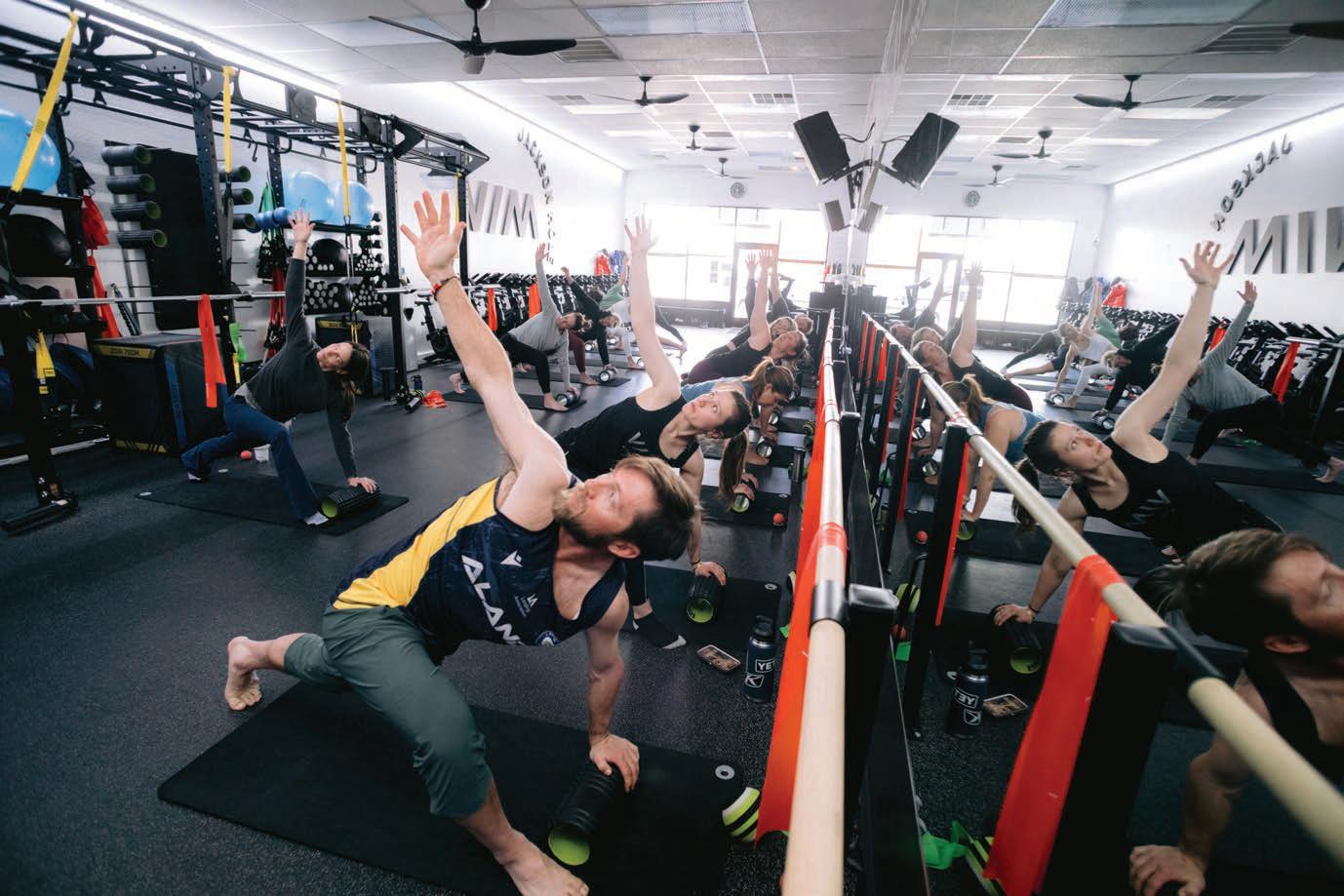
By Kate Ready
While overuse injuries remain common amongst Jackson’s active community, newer culprits like pickleball and screen time are emerging as drivers of injuries.
To prevent injuries across the board, experts recommend a wellrounded approach to exercise that incorporates various muscle groups and gives the body adequate rest and recovery.
All who were interviewed for this story — a gym owner, a fi tness instructor and a physical therapist — said that overuse injuries such as ACL tears, MCL and ankle sprains, as well as shoulder injuries are especially prevalent among Jackson’s
active population.
“With as physically active as our community is, we may have a 40-year-old whose shoulder joint mimics that of someone at 65 just because of how much they use that,” said Terry Johnson, 48, a fi tness instructor at Pursue.
Whether that’s knee injuries from skiing and trail running, or shoulder injuries from climbing, Johnson championed a well-rounded exercise routine that incorporates cardio, strength, balance, stretching and proper recovery.
“The variety of activities we do makes all the difference,” Johnson said. “If we just run all the time, or we just cycle, we get those repetitive use injuries that lead to problems
for us.”
Julia Grace Gillen is a physical therapist at Kilter, a rehab and sports performance offi ce south of town. Of 15 post-operation patients that Gillen is currently treating, she said the majority of her clients are rehabbing ACL surgeries.
“It’s about prevention through maximizing strength, elasticity and proper technique,” Gillen said. “We recommend that people focus on exercises that improve stability and balance and focus on big muscle groups like the glutes, hamstrings and quads for knee injuries specifically.”
Many in Jackson are catching on to the importance of strength training.

“There was a time when we focused so much on an aesthetic,” Johnson said. “That’s not so much the case anymore. We’re seeing people in our strength classes who want to be healthy to live life. We’re not powering through just to look like something.”
Weightlifting and resistance training is becoming especially popular among women, Johnson said.
“We see a lot of ladies in our strength classes that are now lifting heavy weights because they see how much stronger they can be and what it prepares us to do outside,” Johnson said. “We’re having to buy larger weights, often.”
Lifting more than one’s body

weight is especially important for those in their 30s and above, according to Gillen.
“Once we hit our 30s, we start to lose muscle mass,” Gillen said. “If you’re not resistance training, you actually are losing muscle. We see this 30s population losing muscle, but they still recreate at this high level and that’s where we see a lot of injuries.”
Another change is an uptick in “pickleball injuries.” Gillen saw one or two of these injuries in 2023, but said that spiked to a dozen in 2024.
“We’re seeing more Achilles tendon ruptures from pickleball,” Gillen said. “Pickleball is a lot of agility and quick movement and it’s popular in middle age and older populations who have lost that elasticity, so they go and try and do something really quick and that Achilles tendon will pop.”
The Achilles tendon is a cord that connects the muscles in the back of your calf to your heel bone. If you overstretch your Achilles, it can
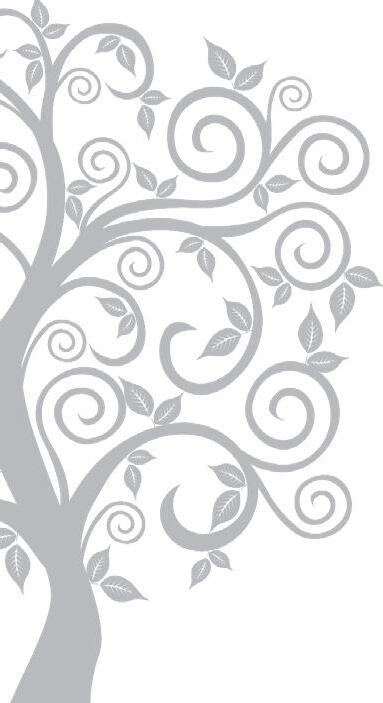

tear partially or completely. As we age, our bodies lose that elasticity so we end up moving and recreating in smaller ranges of motion, Gillen said, which leads to excess stress on joints and tendons.
According to the Mayo Clinic, the peak age for Achilles tendon rupture is 30 to 40 and it is fi ve times more likely to rupture in men than in women.
Julie Guttormson, the owner of Vim fi tness studio, recommends lateral training, which improves mobility, stability and balance by activating side muscles often neglected in regular training. It also enhances coordination and helps prevent injuries by mimicking real-life movements.
“One of our favorites is the slide board, which helps rebuild strength and stability, particularly in the hips, knees and ankles,” Guttormson said.
Gillen and Guttormson recommended working different muscle groups to prevent overuse injuries and maximize mobility.
“Typically in Jackson the athlete likes to train for their sport so that’s
why we do have a high injury rate because people are not likely to be in a gym working on that agility,” Gillen said. “We don’t always bike. We don’t always ski. We mix it up with what we call cross-training.”
Some exercises Gillen recommends are squats, lunges and deadlifts as well as planks to fi re up the core and single-leg balance exercises for stability. Some of it can be done during your morning routine.
“If you’re brushing your teeth, stand on one leg,” Gillen said. “In the morning, balance on your left leg. At night when you’re brushing, balance on the right leg.”
For the desk-bound, try standing up on one leg the next time you get out of your chair. While sitting, do some heel raises or squeeze your shoulder blades together.
The next time you’re in a meeting, try placing your hands palm up on your thighs, which Gillen said helps to correct posture.
“Neck and shoulder posture issues are on the rise because we are so screen-oriented,” Gillen said.
Gillen and Guttormson stressed the importance of listening to the
body and not pushing through pain.
“Pushing through discomfort can make things worse and lead to longterm damage,” Guttormson wrote in an email. “I also stress the importance of mobility and recovery — it’s easy to focus on strengthening the injured area, but stretching, foam rolling and gentle movement are equally important.”
Vim offers a popular “durability” class at 10 a.m. on Saturdays that focuses on fl exibility and fascia release. The gym is poised for a move next month from the Movieworks Plaza to the Powderhorn Plaza, where there will be more space for classes and equipment.
Focusing on proper stretching, as well as adequate water and protein intake also are key.
“We often push ourselves very hard in the community, but it’s very important to balance that with rest and recovery,” Gillen said. “If people want to optimize their recovery, make sure you’re getting enough hydration, protein and sleep.”
Contact Kate Ready at 307-732-7071 or jlove@jhnewsandguide.com


By Jeannette Boner
Kelly Sadauckas is passionate about the pelvis.
And in a world where pee, poop and all things pelvic can, well, make us feel a little uncomfortable at first, Sadauckas has made it her mission to elevate an often overlooked area’s health care needs.
“The vision is to save the world, one pelvis at a time,” Sadauckas said. “The mission is to reduce geographic, financial and psychosocial barriers to accessing pelvic health care and information.”
Sadacukas a is a doctor of physical therapy specializing in pelvic health for the last 22 years. In fact, she is one

of only a handful of double board certified pelvic physical therapists in the world.
From her office space in Driggs, Idaho, she, along with a small but mighty team, operates Floored Physical Therapy — the full name is Pelvic Floored — for short, just in case the Internet wants to censor “pelvic.” True story.
“I consider my practice to be a calling and feel blessed to be able to help so many people,” Sadauckas said.
But what is the pelvic floor?
The Cleveland Clinic defines the pelvic floor muscles as those that “help stabilize your core while assisting with essential bodily functions, like pooping, peeing and having sex. They can weaken over time due to in-
jury and even the normal aging process, leading to conditions like incontinence or pelvic organ prolapse.”
And Pelvic Floored is more than about leaks and dribbles. While Sadauckas creates engaging and easy to access content that gets to the heart of health care down there, she leans into the seriousness of pelvic health, having experienced her own need for care.
“Personally, I had a very traumatic experience with the delivery of my first child,” she writes on her blog. “At the time, I had been a pelvic health PT for 10 years, but had primarily focused on incontinence and pelvic pain, so had limited experience in pregnancy and delivery. I, and my
child, almost died, and following that experience, I decided that I would do whatever I could, in my power and profession, to ensure that no women, child or partner, suffered trauma like my husband and I did.”
Pelvic Floored was born with the goal of creating online courses as well as serving clients in-person. The method and message has been growing as the business currently serves 150 clients one on one each year, mostly in person. In 2024, Pelvic Floored treated clients from the U.S., Japan, Australia, South Africa, England, Ireland, Scotland and Portugal.
“Online course sales are growing steadily, and I currently reach an av-





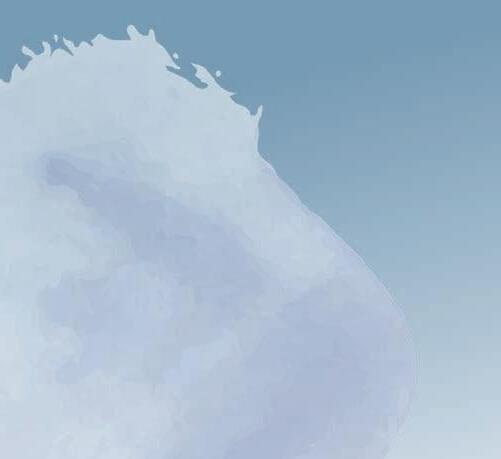
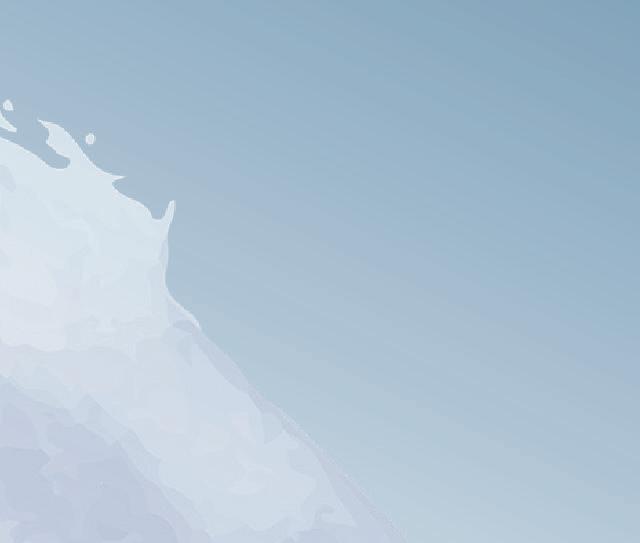

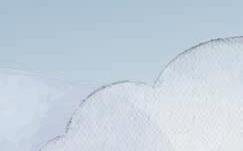








By Whitney Royster
Jackson Holers are a healthy bunch, and their book selections are no different.
Self-help is a huge category of books, worth $13.4 billion in 2022, according to Marketdata LLC, a market research firm out of Maryland. (The entire “self-help” category including podcasts, apps, audiobooks and courses, according to GlobeNewsWire.com, may be worth $47 billion.) It is projected to increase.
Below see the most popular selfhelp books from stores in town, and the New York Times bestseller list: Jackson Hole Book Trader
“Brain Health Kitchen,” by Annie Fenn, M.D. , is about preventing Alzheimer’s through diet.
“Without Exception: Reclaiming Abortion, Personhood, and Freedom,” by Pam Houston , is about abortion rights and how they affected the author.
“Outlive,” by Peter Attia, M.D ., is dubbed “the science and art of longevity,” and looks at how to live longer and “better.”
“Feral Self Care: 100 Ways to Liberate and Celebrate Your Messy, Wild, and Untamed Self,” by Mandi Em , is designed to offer ideas on how to “liberate your unique, authentic, untamed self.”
“Build the Life You Want,” by Arthur C. Brooks and Oprah Win-
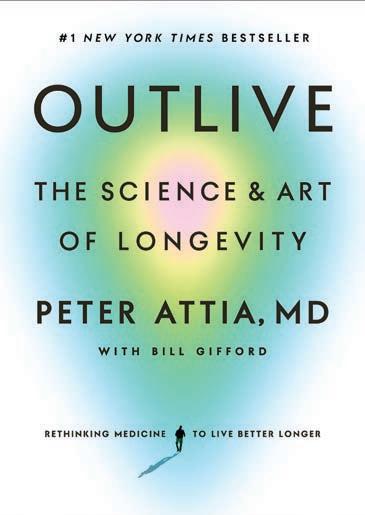
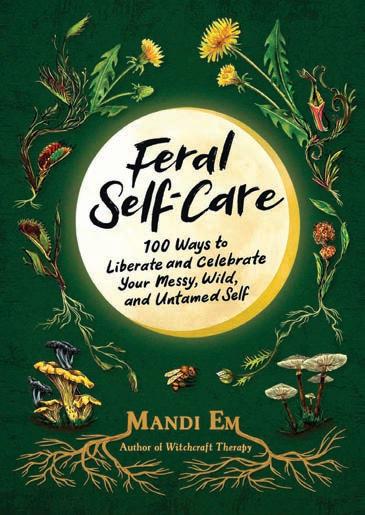
frey , offers a how-to in a journey to happiness.
Wilson Book Gallery
“Brain Health Kitchen,” by Annie Fenn, M.D. (local author).
“The Anxious Generation,” by Jonathan Haidt , subtitled “How the Great Rewiring of Childhood Is Causing an Epidemic of Mental Illness,” is about how technology and social media are impacting young people.
“Atomic Habits,” by James Clear, subtitled “An Easy and Proven


Way to Build Good Habits and Break Bad Ones,” has been a bestseller for several years.
“The New Menopause,” by Mary Claire Haver , helps women navigate hormonal changes.
“Trippy,” by Ernesto Londono , looks at the use of psychedelics in health care.
“How to Know a Person,” by David Brooks, is described as a “practical, heartfelt guide to the art of truly knowing another person.”
“Eat to Beat Depression and Anxiety,” by Drew Ramsey (local
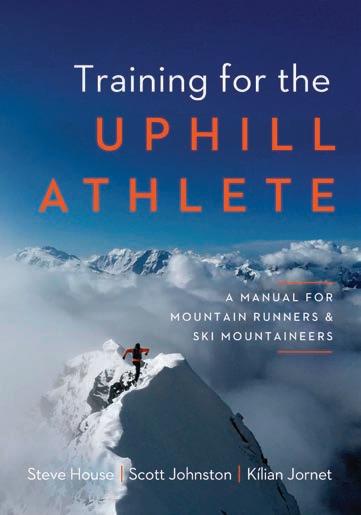
author), offers a six-week jumpstart to adjusting diet to help mental health.
“Outlive,” by Peter Attia Valley B ookstore
“Good Energy,” by Casey and Calley Means looks at metabolic function and how it relates to aging and health.
“Training for the Uphill Athlete,” Steve House, Scott Johnston, Kilian Jornet , is designed to help trail runners.
“Outlive,” by Peter Attia
“The Let Them Theory,” by Mel Robbins , is about tackling mental health by accepting things that are not under your control.
New York Times
“The Let Them Theory,” by Mel Robbins
“The Body Keeps the Score: Brain, Mind and Body in the Healing of Trauma,” by Bessel Van der Kolk, M.D
“Atomic Habits,” by James Clear
“Inner Excellence: Train Your Mind for Extraordinary Performance and the Best Possible Life,” by Jim Murphy
“Good Energy: The Surprising Connection Between Metabolism and Limitless Health,” by Casey and Calley Means
Contact Whitney Royster at valley@jhnewsandguide.com.
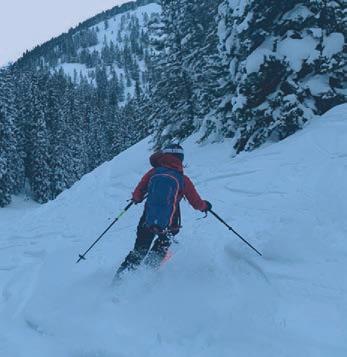








Signature Plastic Surgery is a full-time, comprehensive plastic surgery and aesthetic practice, owned and operated by Laura B. Cooper, M.D, and located in the heart of Jackson, WY.

Dr. Cooper is board-certified in both general surgery and plastic surgery.
She completed her plastic surgery training at Emory University in Atlanta, GA, in 2010, one of the most highly ranked and regarded plastic surgery training programs in the nation. After completing her fellowship, she entered private practice in Memphis, TN, for 6 years before relocating to Teton Valley in 2016.
She established Signature Plastic Surgery in 2019 and has been providing surgical and aesthetic services to patients in this are since then.
Dr. Cooper offers the same services that one would expect to find in large, metropolitan areas.
Being raised in rural Tennessee, she is a country girl at heart and much prefers the quietness of small town living to the hustle and bustle of big-city life. Although we understand some patients may still prefer to travel! to larger cities, you can be assured that you will receive the highest level of surgical precision and attention to detail at Signature. Nothing compares to recovering in the comfort of your own home while receiving home visits and personalized care directly from Dr. Cooper and Kylee.

Our practice also offers cutting edge laser procedures and skin care. We are primarily a "Sciton" practice, a company that offers the absolute best in laser resurfacing in the industry.
Since establishing Signature Plastic Surgery, Dr. Cooper has been recognized by VOGUE magazine as one of the most influential Women in Wyoming in 2023 and most recently has been selected by Castle Connolly as a Top Doctor in her specialty for 2025. These are nominated positions and are unable to be "bought and paid for" by any nominee. She is also a member of the American society of Plastic Surgeons as well as the elite and prestigious Aesthetic Society.
Along with her meticulous skill set, Dr. Cooper has a calm and relaxed demeanor, an attribute to her five years of general surgery training at one of the busiest level one trauma centers in the country. Calm surgeons make for a peaceful operating room and office, which is why you will find positive energy and good vibes radiating in our spaces!
We are so pleased to be of service to the fine people in this community and look forward to seeing You in 2025.



call (307) 699-3115 to schedule your appointment or consultation today!


Plunging proponents say it prepares them for life’s inevitable challenges.
By Charley Sutherland

Veteran cold plunger Tim Walther, 52, had to break ice on a bitterly cold January day to enter the Gros Ventre River as the sun set dramatically behind the mountains. Walther had to pound out a narrow, mostly unfrozen channel of the river before Charles Croson, 40, a newcomer to cold plunging, entered.
The two brave souls exchanged a high-five and submerged into the water, breathing rapidly at first and then slowing their inhalations.
“Channel that inner fire in your stomach,” Walther told Croson about 30 seconds into the plunge. “Yeah big smile.”
Walther has crafted his own seven-step method for cold plunging (see sidebar) and other adventures to optimize preparedness and procure maximum health benefits. Walther’s method, which he shared with
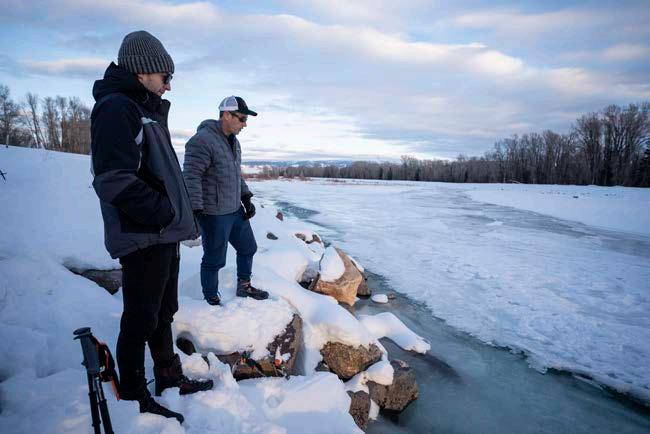
Croson pre-plunge, is outlined in his book “ALL IN Adventure Stories.”
After a traverse over
snow-covered boulders, Walther and Croson stripped down to their shorts and went through a series of Wim Hof-adjacent
breathing exercises. Immediately before submersion, the two, who looked glaringly out of place in only shorts amid the snowy backdrop, squatted down into a horse stance, swayed their arms back and forth and made “hoo-hah” sounds.
Walther offered words of encouragement to Croson throughout their plunge. Walther held his hands outwards and Croson kept his hands in front of his chest. Occasionally, the two dipped their heads into the water.
Walther and Croson remained in the water for nearly three minutes, reveling in the discomfort that they say fades into contentment.
“That’s a proper cold plunge,” Croson said on his way out of the water. He said he feels “amazing” as the two redress and wrap themselves in towels to trek back to the car.


What: Get really clear on what you’re doing. Go look at the water and determine where exactly the best and safest place to enter is. Prepare mentally and physically for the cold. Engage in breathing techniques and envision what the water will feel like.
Why: Reasons vary for cold plunging. Find yours. For Walther, it shows him he can do hard things and puts other hard things in his life into perspective.
How: Walther and Croson plan their route down to the river and discuss how long they plan to spend in the water.
Who: A personal check in. Ask yourself — are you ready to do the thing? If others are accompanying you on your plunge check in with them — are they ready to go?
Environment: It’s about 10 degrees Fahrenheit and the water, Walther estimates, is likely just above freezing.
Risks: Footing on the route down to the river is snow covered and hazardous. Walther recommends ski poles so all remain balanced. Remaining submerged for too long could pose risks.
For Walther, part of the benefit of a plunge lies in the psychology of doing something difficult.
“Doing something challenging frequently, like this, isn’t easy,” Walther said. “It’s not going to be easy this time — or ever — but you do the hard thing because that trains your psychology, your mental fitness and your emotional fitness. And it prepares you to do other hard things in life.”
It’s right after entering the water when your body is telling you most loudly to get out, Walther said. Eventually, you adapt and the cold doesn’t feel quite as cold, he said.
Croson held his hands up to his car’s heater during a post-plunge debrief. Plungers’ hands and feet get cold first and stay cold longest, Walther said. The human body prioritizes maintenance of core temperature when faced with extreme cold and constricts blood vessels in the extremities, which results in cold hands and feet. Most of the benefits of cold plunging are psychological for Walther. But he added it improves heart health, bolsters the body’s lymphatic system and fires dopamine with an adrenaline release.
See COLD PLUNGE on 14
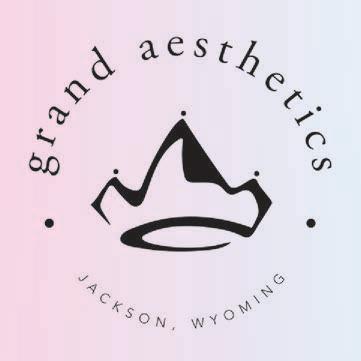


LASER IPL
LASER HAIR REMOVAL
LASER TATTOO REMOVAL
LASER SKIN RESURFACING
Offering Linder Health Peels a gentle blend of acides ideal for hyperpigmentation, acne, fine lines and wrinkles.
Offering Semaglutide and Tirzeptatide for guided medical weight loss

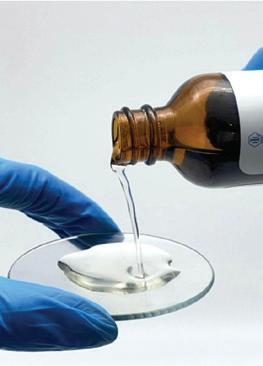
Get your Vitamins via IV!
Experience an instant boost of vitamins & re-hydration.
Ideal for those in need of an energy boost or after a long day of adventure. With over 20 years of

Continued from 13
Walther’s not alone in singing the praises of cold plunges. A host of social media users across Instagram, TikTok and other platforms love to plunge and post about it often.
Some of the most hard core plungers take a dip every day and video themselves breaking the ice in their metal tubs before entering the freezing water. Many offer their commentary on discipline from the tub.
The health benefits of cold plunges are largely “anecdotal,” according to Susan Kwiecien, a New York-based PhD researcher in cryotherapy. However, that doesn’t mean folks who enjoy it shouldn’t plunge. “If you’re cold, and it makes you feel good then continue,” she said.
The benefits of cold exposure emerge with duration, Kwiecien said. It’s not possible to safely prolong a cold plunge, so there are better ways to go about cold exposure therapy, she said.
Folks with increased skin fold thickness have an increased tolerance to the cold because their core temperature won’t cool as quickly as someone with less body fat.
“Females, due to sex hormones, have a lower tolerance to cold. Since it’s not a one size fits all approach, you shouldn’t be competing with your friends over who can stay in longer,” Kwiecien said.
There’s no doubt, however, for folks like Walther, Croson and Hanna Austin, another Jackson Hole cold plunger that they feel better post plunge.
Austin doesn’t quite have the time to get out for cold plunges as much as her friend Walther, but she finishes showers with cold water and loves a good river or lake
plunge, especially when she can encourage her pals to join her.
Like Walther, Austin said after a plunge she can tackle the most difficult item on her to-do list. She feels less stressed.
“You’re intentionally putting your body into stress, and then you’re less stressed afterwards,” Austin said.
Croson, who splits time between Teton Valley, Florida and New York, even as a relative rookie, is catching the cold plunge fever.
“These kinds of challenges, you can take it back and apply it somewhere else,” he said. “No matter how hard certain things get with work or other challenges — you can reflect on this and be like ‘Oh, I can do that.’”
Walther has secret spots that require a ski in but keeps those under wraps. He’s an avid skier, rock climber, mountaineer and extreme swimmer. He’s completed swims from Alcatraz and across Grand Teton National Park’s lakes and free dived to harvest abalone from the ocean floor.
When daunted by the final ascent up a big peak or if he’s in the final leg of a big swim and things get difficult, he recalls cold plunges. He’s plunged so often and it’s never easy and makes his athletic endeavors trouble-free by comparison.
“It’s amazingly empowering,” Walther said. “You know that feeling of being able to be calm amidst sort of a chaotic moment, that’s what I like about it.”
Those three minutes of immersion suck, Austin said.
“But you’re not doing this to be comfortable. You’re doing this to have an awesome day and to just fully believe in your own power.”
Contact Charley Sutherland at 307-7327066 or county@jhnewsandguide.com
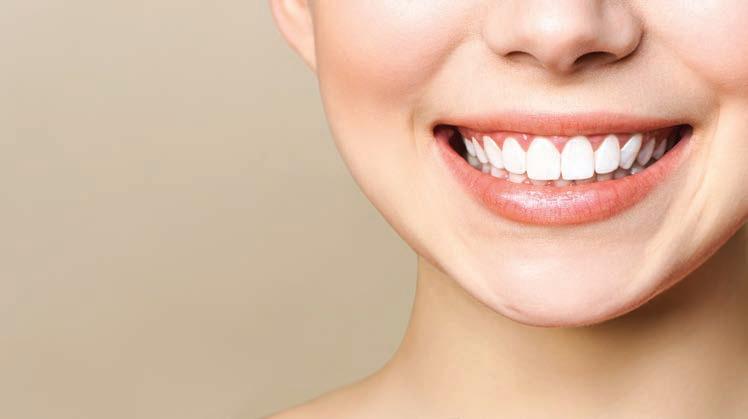



Dr. Tyler Bergien and Dr. Lisa Nehring along with their team at Alpine
take a comprehensive approach to oral
They can help you with all of your oral healthcare needs from routine teeth cleanings and exams to cosmetic smile makeovers and TMD (jaw joint pain) appliances.
Dial (307) 734-5200 to schedule your appointment New patients are welcome

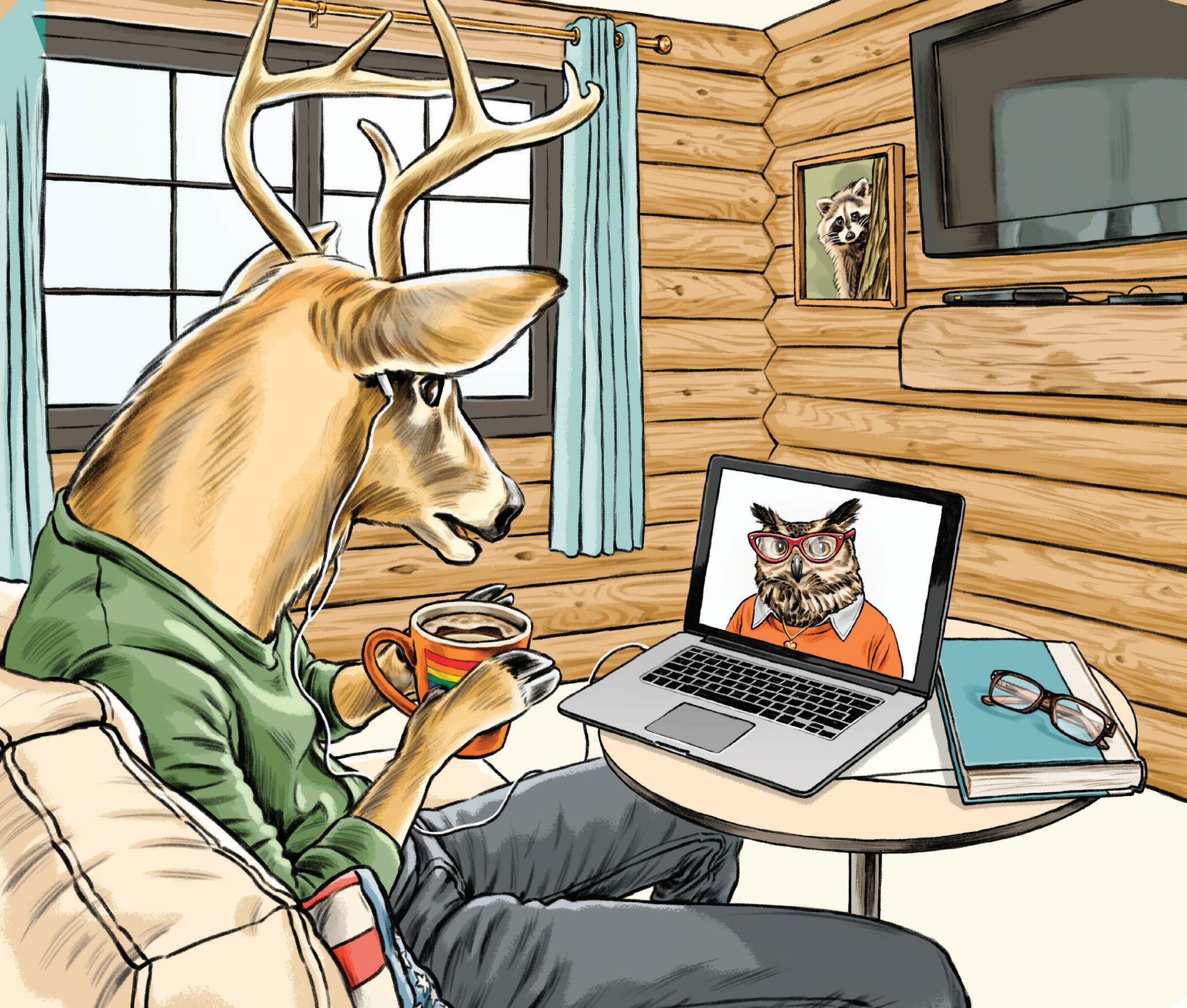



to reclaim your time?
Consider taking a break from the scrolling.
By Johanna Love
Do you ever pick up your smartphone to check a specifi c thing or accomplish a specifi c task, only to be overwhelmed by the red alert dots and vast variety of options? Do you start scrolling and get sucked into video reels only to emerge foggyheaded, vaguely discontent and aghast at the time that disappeared?
Maybe it’s time for a technology break.
As “Dopamine Nation” author Dr. Anna Lembke writes, “the smartphone is the modern-day hypodermic needle, delivering digital dopamine 24/7.”
Scientists use the brain chemical dopamine to measure the addictive potential of an experience. The problem is that when w e chronically overconsume things such as sugar, TikTok or alcohol, they bring us less pleasure as we build tolerance and our body fi ghts to regain homeostasis.
Our brains get so used to the easy hits of screen dopamine that they no longer respond to the kin ds of things that used to bring us pleasure, like watching the sunset or playing with a dog.
Any kind of break from an addictive substance can help reset neural pathways and restore homeostasis, but the longer the better, Lembke advises.

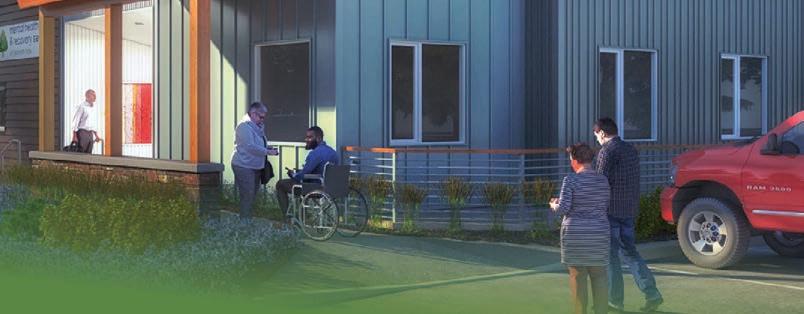
that 1 in 4 individuals will struggle with a behavioral health issue this year?
In addition, more are experiencing issues and with more severe symptoms. In fact, the new numbers coming in show that suicide is now the leading cause of death for youth. Another sad fact is that most will not seek the treatment they desperately need due to two barriers – affordability and stigma.
Can you imagine dealing with a substance use issue or mental illness alone and with no resources? That is where we come in. We provide affordable services for anyone that lives or works in Teton county.

After years of being caught in the cycle of being incredibly responsive to clients, prospective clients, friends and family, Jackson Hole Mobile Massage owner Amanda Martin realized that she needed to step away from the screen. Now in addition to putting her smartphone on “do not disturb” mode when giving a massage, she doesn’t look at social media notifi cations until the end of her workday, and turns off all
Crisis Intervention
• Walk in Crisis Services
• Crisis Line – 24/7/365
• Mobile Response for Hospital & Jail
• Crisis School Referrals
• Crisis Response Planning
• Support for Community Events
• Mountain House drop-in Center
• Social Activities
• Case Management & Employment Support
• Medication Management
• Psychoeducation
• Individual & Group Therapy
• Peer Specialist
• Intensive Outreach Supports
• Evaluations & Assessment
• Education & Prevention
• Court Supervised
Treatment Provider
• Outpatient Treatment
• Assessment & Evaluation
• Individual Therapy
• Group Therapy
• Aftercare Services
• Free Consultations
• Groups for Spanish Speakers
• Skills Training
• Medication Management
• Education and Outreach
• Individual Therapy
• Groups
• Skills Training
• Family Therapy
• Play Therapy
• Case Management
• School Liaison
• Medication Management
beeps, boops and notifi cations from 8 p.m. to 9 a.m. daily.
“I had to give myself permission to not have to look at things all the time,” Martin said.
And the benefi ts are tangible.
“I’m less anxious, I sleep better and I respond better, because I’m not impulsively responding,” Martin said. “It’s a much more mindful way of responding to things.”
She stays vig ilant about her use creeping up by allowing Apple to send her an “average screentime” alert each week.
In a Jan. 25 lecture via the Brainstorm Series at the Center for the Arts, Lembke showed a slide to the audience offering some guidelines for a 24-hour phone-free challenge.
“The aim is to interrupt your physiology and reset dopamine reward pathways,” she said. Although 24 hours is probably not enough to make a big difference in physiology, it “may make you realize how addicted you are.”
Tips include:
• Set a date and time for going cold turkey. Tell people you’ll be out of contact. Make plans for what you will occupy your time with.
“Trust me: Time slows down when we stop chasing dopamine,” Lembke said.
• Anticipate symptoms of withdrawal: anxiety, irritability, insomnia, dysphoria, craving.
“Just know these are time limited and with continued abstinence will lessen or go away completely,” Lembke advised.
• Have a plan for when you get intense cravings to check your phone. Take a cold bath, do 20 sit-ups or squats or clean out a closet. Instead of switching to a different a ddictive substance, do something slightly

hard to help your brain reset the pain-pleasure balance.
• When the fast is over, plan how to reintegra te electronic devices without letting them rule your life. Write down the ways your fast made you feel better and keep it with you. Before opening your device again, make a list of what you plan to do and set a time limit. Use strategies such as turning off alerts and deleting apps.
Staying vigilant about creeping screen time can pay dividends, the massage ther apist said. At least one day per week, Martin tries to take the whole day off of the screen, and longer breaks off-grid on a regular basis.
“Everybody deserves a day when they get to be in the moment and present,” Martin said. “It’s so therapeutic.”
Contact Johanna Love at 307-732-7071 or jlove@jhnewsandguide.com


New services:
24/7 EMERGENCY ROOM
Round-the-clock emergency care
SURGICAL SERVICES
Outpatient surgeries such as endoscopies, orthopedic, and pain management procedures
CARDIAC CATHETERIZATION LAB
A specialized suite for angiography, pacemaker implantation, stent placement, and more
You will also still have access to our Alpine location’s pre-existing services: URGENT CARE
Treatment for non-life-threatening illnesses and injuries
SPECIALTY SERVICES
A wide range of specialized care, including gynecology, audiology, and otolaryngology (ENT) PRIMARY CARE
Your local partner in health
*Please note that inpatient care will not be available at our Alpine clinic. Should emergency or surgical patients require an overnight stay, they will be transferred from our Alpine clinic to our Afton hospital or a regional facility if needed.
“Star Valley Health is making multi-million dollar investments in cardiovascular, orthopedic, and primary care services. We are not just skating to where the puck is now, but where it is going to be in the next decade. It’s all about preparing for the future.”
– DAN ORDYNA, STAR VALLEY HEALTH CEO
To schedule an appointment, call 307-654-5852. We’re honored to serve you and your loved ones.


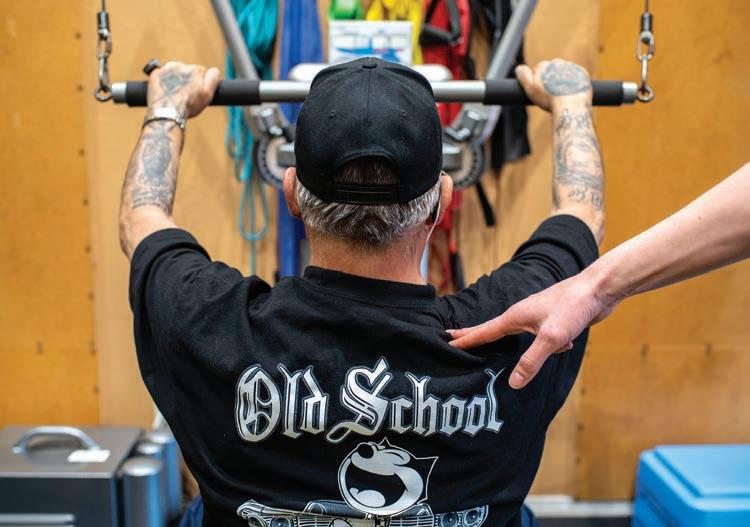
Continued from 5
Now, with a custom footbed in her ski boot that relieves pressure on the bottom of her foot, she is out in the mountains again.
“Skiing brings me so much joy,” Ostergren said. “I love it so much, so being able to do that now since Christmas has been the best thing ever in my life.”
Athletes like Ostergren, her good friend Jim Ryan — who has also been dealing with an ankle injury from a Lime scooter incident in San Francisco — and professional skier Caite Zeliff, who has been recovering from a traumatic brain injury, are all under immense amounts of pressure when such injuries occur. Their bodies are their jobs, and to the outside world, being an athlete is their identity. But not everybody is like them.
In fact, most people aren’t.
The majority of people who live in

Cold plunges are rapidly gaining popularity among athletes, fitness enthusiasts, and wellness seekers. While the initial shock of immersing in cold water might seem intimidating, the benefits are profound. From improved circulation and faster muscle recovery to enhanced fat burning and mental resilience, cold exposure is proving to be a game-changer in the health and fitness world.
One of the most fascinating e ects of cold plunges is their ability to activate brown fat, a type of fat that burns calories to generate heat. Dr. Andrew Huberman, a neuroscientist at Stanford University, has extensively researched the benefits of cold exposure. “When you immerse yourself in cold water, especially below 60°F, your body activates brown fat, which increases
and helps burn more energy,” he explains. This makes cold plunging not just an e ective recovery tool, but also a natural way to boost metabolism and aid in weight management.
Teton County are common athletes. They ski at the village and skin up Old Pass Road in the winter, and they run 5Ks and bike to Grand Teton National Park in the summer. They, too, get injured, and they, too, are impatient in the recovery process.
“People live here to recreate, so they don’t want to take three weeks off of skiing so that their knee feels better,” said physical therapy clinic director at Four Pines, Shawna Troupe. “All athletes have a hard time stopping to take care of themselves, especially if it’s not an injury like an ACL that’s taking them out of the game.”
In fact, Troupe says because there are so many available recreational options in Teton County, people get injured more quickly by jumping from one activity to another. After a full winter of skiing, one’s ankle stability will be quite low from wearing a stiff boot,
See INJURIES on 19


This is why many high performers and athletes incorporate cold plunges into their daily routines—not only for physical benefits but also for enhanced mental clarity and stress resilience.


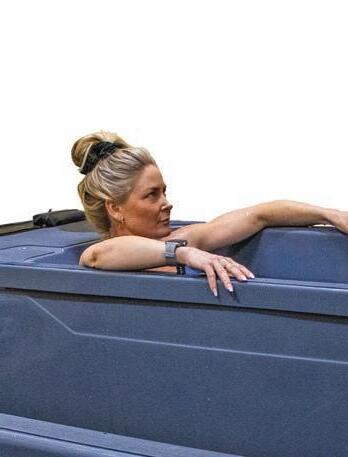
Dutch extreme athlete Wim Hof, also known as “The Iceman,” has helped popularize cold exposure through his training methods. “The cold is your warm friend,” Hof often says, emphasizing that controlled exposure to cold strengthens both the body and mind. His techniques, backed by scientific studies, show that cold plunges improve the immune system, enhance cardiovascular function, and even reduce stress. “When you expose yourself to the cold, you train your vascular system and nervous system to become stronger,” Hof explains.
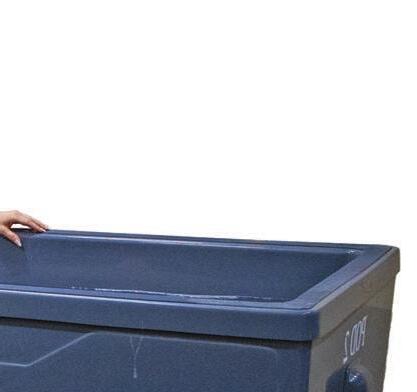
Beyond muscle recovery and fat loss, cold plunges can also sharpen mental focus and boost mood. Cold exposure triggers the release of norepinephrine, a neurotransmi er that increases alertness, improves mood, and reduces inflammation.


Dr. Susanna Søberg, PhD, a leading researcher in cold and heat therapy, has found that combining cold plunges with sauna use can maximize the benefits. She describes the “Søberg Principle,” which involves ending the cycle with cold exposure to prolong the body’s thermogenic e ect. Her research suggests that alternating between heat and cold—such as using a sauna followed by a cold plunge—can significantly improve circulation, strengthen the nervous system, and enhance overall well-being. “The key is to finish on cold to extend the metabolic and cardiovascular benefits,” she advises.
The Athletic Club at Jackson Hole has two custom cold plunges along with a steam sauna, dry sauna and two infrared saunas for your new fitness routine. Whether you’re seeking faster muscle recovery, improved mental resilience, or a natural metabolic boost, incorporating cold exposure into your routine could unlock a new level of health and performance!

so trail running the first day the mud dries will probably be detrimental.
The same thing happened when the Teton County/Jackson Community Parks and Recreation Community Center’s climbing gym opened up last summer. All of a sudden, people think that they can go six days a week and climb for three hours. That’s where Troupe gets her shoulder tendonitis clients.
“People just hit it very hard, very quickly and develop these kinds of injuries,” Troupe said, “and then don’t really take the time to rehab them because it’s more fun to be out skiing or climbing or whatever you’re doing than doing exercises in the gym.”
The way to avoid this, Troupe said, is to have some sort of “prehab program,” or knowing that you will be switching activities ahead of time and preparing
your body appropriately for whatever that may be.
Yes, Jackson is one of the best places in the world to recreate, but that also makes it one of the easiest places to get injured. And because of all that, just a little further down that chain of command, it’s a hard place to beat for a physical therapist.
“I tell people that Jackson is the best place in the world, I think, to be a PT,” Troupe said, “because all my patients — whether they’re 8-year-olds in ski school or 80-year-olds that are getting their knee replaced and want to downhill ski or cross-country ski — everyone is so passionate about whatever they’re doing.
“Everyone does really care more about their body and their health than they do in other places, and it’s special to feel like they appreciate my role.”
Contact Kyle Leverone at 307-732-7065 or sports@jhnewsandguide.com






























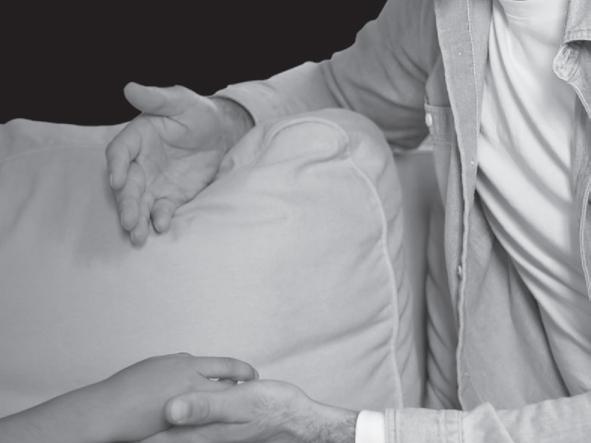


erage of 300,000 people a month on social media, with high points being 3 million during one month. That’s a lot of impact. Reaching a lot of pelvises, improving a lot of lives,” she said.
And while pelvic health care can sometimes feel focused on females, Sadauckas has been encouraged that men are reaching out for care too.
Pelvic problems affect eight out 10 people regardless of gender, she said. Female patients can take fi ve to even seven years before seeking out help to address issues — men even longer, Sadauckas said.
Sadauckas said that while seeing a primary care medical professional is important, sometimes their understanding of the pelvic fl oor hasn’t caught up to the progressive care that is available.
Leaks are not normal, pain is not normal and unlike your grandmother’s advice, the pelvic fl oor can’t simply be fi xed with “kegels.” “Most problems are caused by people not knowing how to elongate the pelvic fl oor muscles, rather than not knowing how to tighten them,” she said.
“There’s a famous saying that incontinence doesn’t kill you, but it rather ‘just takes your life away,’” Sadauckas said. “Pelvic physical therapy can help give it back to you. At any age. It’s never too late to try.”
And if you read the story on cold plunging in this issue, Sadauckas has a story for you about how that practice can work toward better pelvic health.
Pelvic Floored is growing by welcoming a second Physical Therapist, Dr. Jen Kunzman, and Board Certifi ed Women’s Health Specialist Dr. Chrissy Clark for online visits.
Kunzman is a Doctor of Physical Therapy, mother of two, ultrarunner and certifi ed running coach. She is
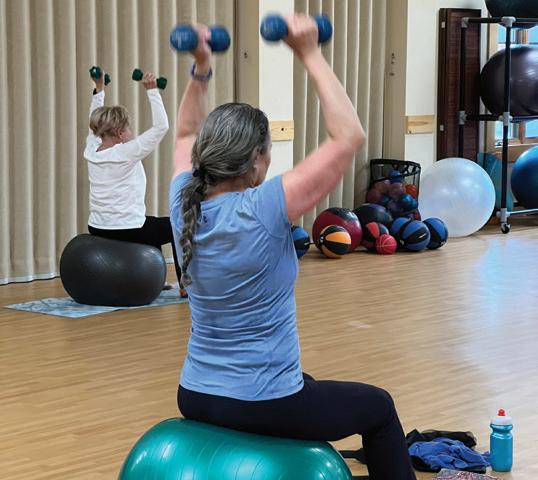


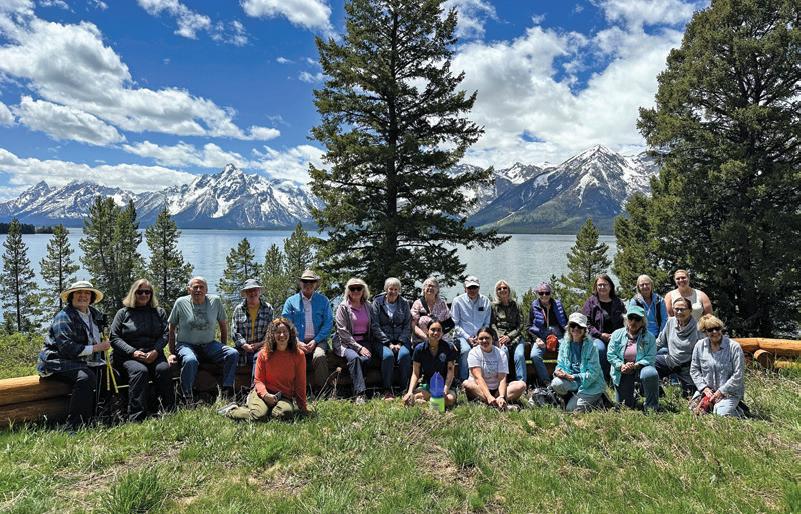


able to help with any nagging body ache and is especially trained to help you fi n ally eliminate those pesky leaks with running.
Clark is also a Doctor of Physical Therapy, mother of one and CrossFit Level 2 Coach and fi nds specifi c fulfi llment in helping mothers navigate the early postpartum waters and return to weightlifting in a healthy, holistic fashion.
The Pelvic Floored can be found at PelvicFloored.com. Here you can fi nd fun and educational blog posts about a variety of Pelvic Floor topics including how to use a menstrual cup, how to kegel — how not to — and should you kegel?
Contact Jeannette Boner at 307-7325901 or courts@jhnewsandguide.com.



makes it illegal for anyone to advertise themselves as a board certifi ed music therapist without the proper national accreditation. Wyoming is one of seven states to pass similar legislation.
“This is an exciting day for Wyoming music therapists and, more importantly, constituents who don’t currently have access to music therapy services,” Hilary Camino, Wyoming Music Therapy task force chair and the director of music therapy at St. John’s Health, said in a statement. “I’m hopeful we can continue moving this bill forward to positively affect the lives of patients and vulnerable populations and expand the fi eld of music therapy in Wyoming.
“Music therapists have provided clinical and professional services in Wyoming for at least 30 years,” she said. Across Wyoming, several hospitals and long-term care facilities have music therapy programs that reach approximately 400 patients a week. Certifi ed music therapists use clinical-based music interventions to help individuals enhance memory, improve communication, reduce stress and promote physical and mental rehabilitation.
Another bill that was welcomed by health care advocates was Senate File 74. It provides immunity for those who report a drug overdose when calling for emergency medical help. The Wyoming Association of Mental Health and Substance Abuse Centers has been a driving force in getting the bill through the Legislature, as Wyoming is the last to pass a “good samaritan” law.
But young Wyomingites and college students also showed up to voice their support for the bill. They want to expand it to underage alcohol-related offenses too.
“I spent a lot of time speaking
with dozens of students from our Greek Life Community, and they all feel very strongly in support of this legislation as far as personal responsibility goes and the importance of really making sure that we are a safe and responsible campus,” Sophia Gomelsky, director of the University of Wyoming Governmental and Community Affairs for Associated Students testifi ed in the Senate Labor committee. “We all strongly believe this legislation will encourage individuals to seek help during emergency situations without fear of legal repercussions.”
But Martin said the legislation sponsored by the Labor Committee only “nibbled” at issues that affect very few people, when there are thousands of people in Wyoming struggling to access affordable health care.
A policy decision the Legislature could make this session that he said may address one of the issues emphasized by residents in the survey is increased access to providers.
Gov. Mark Gordon has lobbied for lawmakers to adopt two amendments to the supplemental budget that would increase Medicaid reimbursement rates for providers who offer maternal and mental health care. Martin said this would incentivize doctors to stay in Wyoming, as well as to treat mothers and residents struggling with their mental health.
He said they were concrete, small steps to take. But he said it does cost the state money, and he doesn’t know if the Freedom Caucus in the House is prepared to spend it.
“I think it would be a great position to land on for a compromise that benefi ts the people of Wyoming,” Martin said.
Contact Jasmine Hall at 307-732-7063 or state@jhnewsandguide.com.




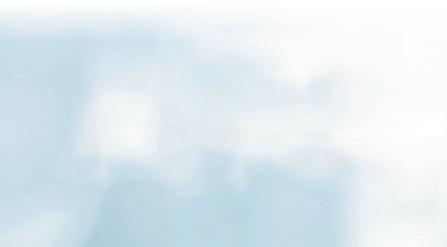





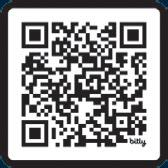

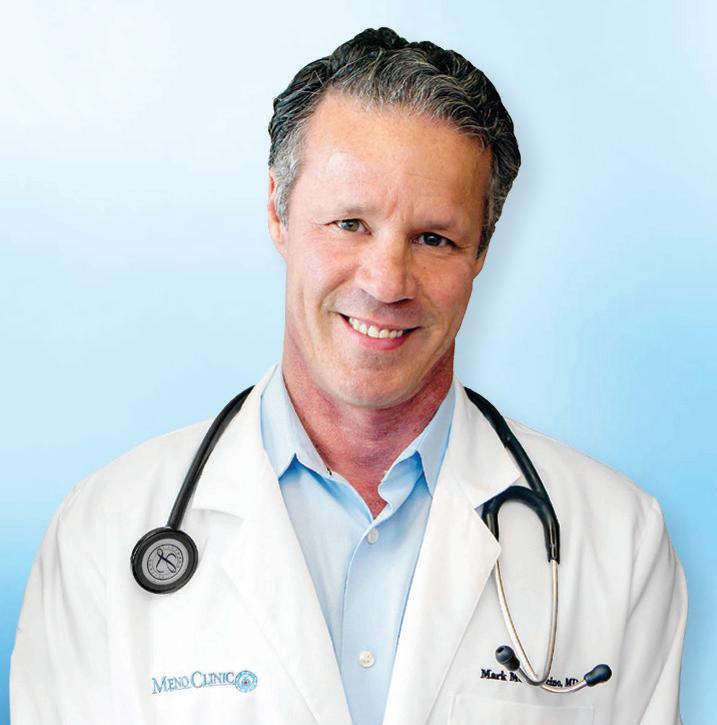



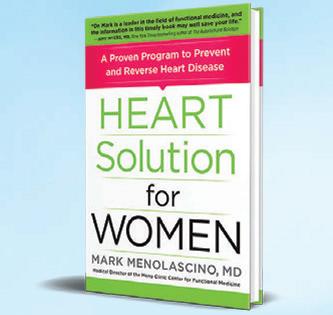
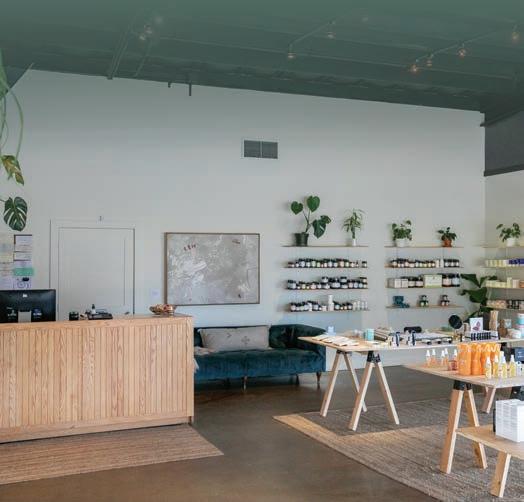


experienced lactation nurses and experts in child development, serving as a conduit to local resources and better mental health for parents.
Adaptive yoga classes also are offered once monthly through a partnership with Teton Adaptive — a nonprofit who aims to make recreation more accessible for people with disabilities. Those classes are designed for adults with physical or cognitive differences.
“It’s a style of yoga that is accessible for every body,” Daily said. “You can do it seated, you can do it standing, and it offers poses for people’s unique needs.”
Inside the wellness clinic, another nonprofit, Wyoming Health Fairs, frequents the Rec Center twice a month to host blood draws. The nonprofit saw such great turnout at its once-a-month blood drives, the organization asked in
December to up the frequency to twice monthly, according to Daily. Fifty to 70 people are attending those, Daily said, which occur every second and third Thursday of the month.
“We’ve seen such great results and a lot of people want to attend,” Daily said.
Group fitness is one area that the Rec Center has seen skyrocket in popularity since winter arrived. Luckily, the number of group fitness classes, which range from Pilates to jump roping, has doubled since June.
“We have really seen a spike in class numbers since winter started,” Daily said. “It ranges from a strength circuit class to a vinyasa yoga,” Daily said. “We have Zumba, we have spin classes, we have balance and weight, which is organized for the active agers.”
One of the highest attended group fitness classes is “Hole Health,” a class taught every Monday, Wednesday and




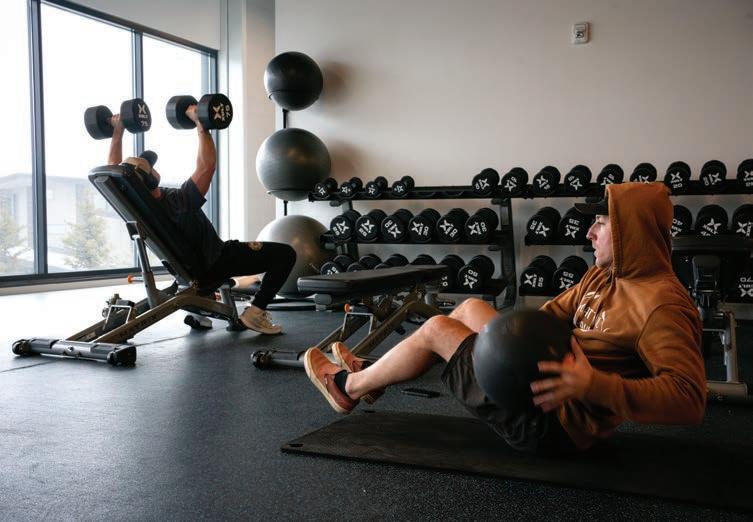

now Friday due to its popularity. Hole Health combines strength and cardio and is hosted in Spanish. It’s a result of a partnership with the Children’s Learning Center and offers day care.
“Child care is such an amazing resource if the parent just needs to drop them off for a second and work out,” Daily said. “We’re hoping to tap into that more.”
To allow parents greater access to the Rec Center’s amenities, day care is offered every day: on Mondays through Fridays from 10:30 a.m. to 2:30 p.m. and 3:30 p.m. to 7:30 p.m. Day care hours decrease slightly on weekends, available 9 a.m. to 12:30 p.m. on Saturdays and Sundays and again from 1:30 p.m. to 4 p.m.
Starting in January, the Rec Center also added personal training to its ar-

senal. Two personal trainers offer private or semi-private personal training sessions which 10 to 15 people have signed up for so far, according to Daily. Those sessions can be held one-on-one or for a group of up to three people.
Daily recommended personal training to two groups of people: gym newbies or the well-seasoned professional.
“That’s geared toward anyone who is just starting at the gym and looking to gain some more expertise with the equipment or if you’re an expert athlete,” Daily said.
Daily and Foster both said they’re seeing the space become a hub for families, a spot that offers something for everyone, from tae-kwon-do to tennis lessons to swim clubs.
“It’s great to see families coming in and utilizing all these new opportunities we have for them,” Foster said.
Contact Kate Ready at 307-732-7071 or jlove@jhnewsandguide.com

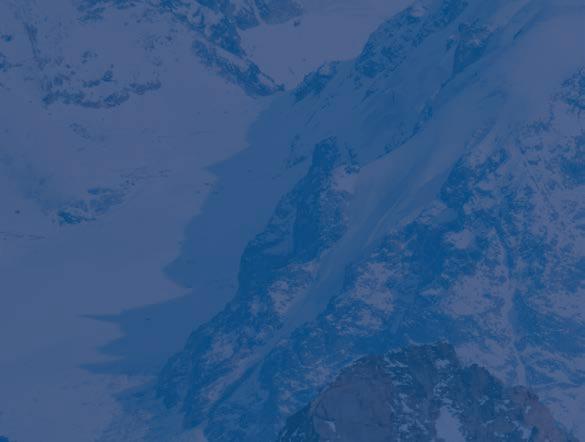







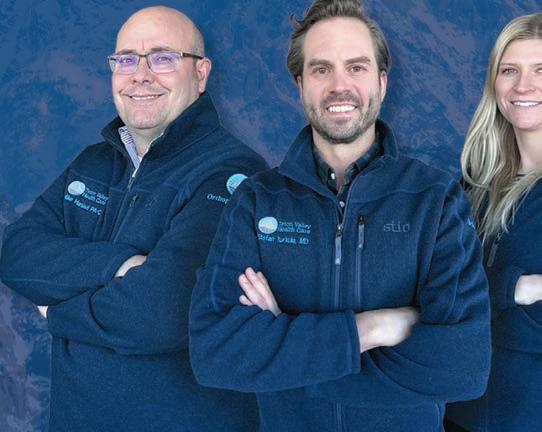





Heart Disease is the leading cause of death in the U.S., yet 80% of heart disease and strokes are preventable through healthy lifestyle choices.*
What you eat matters. A diet rich in fruits, vegetables, whole grains, and lean proteins can significantly lower your risk.
You can move your way to a healthier heart. Regular physical activity, just 30 minutes a day, can make a big difference.*
High blood pressure is often called the "silent killer" because it shows no symptoms. Make sure to know your numbers! †
Smoking increases the risk of heart disease by 2–4 times, but quitting can improve your heart health almost immediately.*
* Source: American Heart Association † Source: CDC
February is American Heart Month! Learn more about our cardiology services here: www.stjohns.health/cardiology